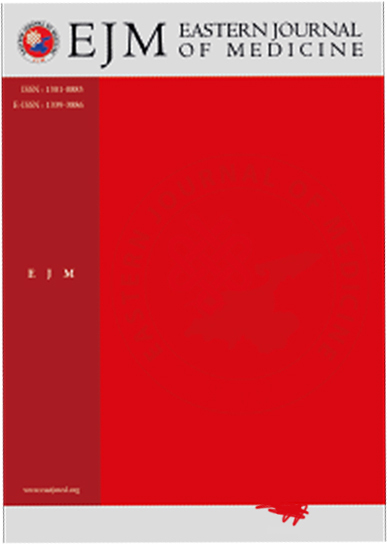The Relationship Between Inflammatory Parameters and the Duration of Febrile Neutropenia in Children with Febrile Neutropenia
Hatice Uygun1, Esra Pekpak Sahinoglu2, Ayse Ceyda Oren2, Mohamad Alzalek3, Tanyeli Güneyligil Kazaz4, Sinan Akbayram21Department of Pediatric Infectious Disease, Gaziantep University School of Medicine, Gaziantep, Türkiye.2Department Of Pediatric Hematology And Oncology, Gaziantep Liv Hospital, Gaziantep, Türkiye.
3Department Of Pediatrics, Gaziantep University School Of Medicine, Gaziantep, Türkiye.
4Department Of Biostatistics, Gaziantep University School Of Medicine, Gaziantep, Türkiye.
INTRODUCTION: Febrile neutropenia is the most common complication and emergency condition frequently seen in pediatric patients receiving cytotoxic chemotherapy. Indices calculated using various ratios of parameters in complete blood counts are important predictors of various outcomes in conditions where the inflammatory process is at the forefront. This study aimed to investigate whether Neutrophil-Lymphocyte, Platelet-Lymphocyte, Monocyte-Lymphocyte ratio,and Systemic Immuno-Inflammation Index, Systemic Inflammation Response Index are effective markers on the duration of febrile neutropenia in children diagnosed with febrile neutropenia.
METHODS: This retrospective analysis involved 59 pediatric patients diagnosed with cancer-related febrile neutropenia. Among the participants, 52.5% (n=31) were classified in the short-duration febrile neutropenia category, comprising 51.6% (n=16) males and 48.4% (n=15) females. Conversely, 47.5% (n=28) were categorized in the long-duration febrile neutropenia group, which included 57.1% (n=16) males and 42.9% (n=12) females.
RESULTS: In the statistical analysis of the indices obtained from the ratios of complete blood count parameters measured on the first day of febrile neutropenia, there was a significant difference between the groups in terms of the Platelet/Lymphocyte ratio (p=0.045).
DISCUSSION AND CONCLUSION: This study suggested that various inflammatory parameters do not have a significant predictive effect on the duration of febrile neutropenia in pediatric patients monitored for short-term and long-term neutropenic fever. In our research, the group with prolonged neutropenia exhibited a decrease in Platelet/Lymphocyte ratio, which contrasts with existing literature. This discrepancy may be attributed to the fact that a substantial portion of the pediatric patients diagnosed with febrile neutropenia had a primary diagnosis of leukemia.
Manuscript Language: English














